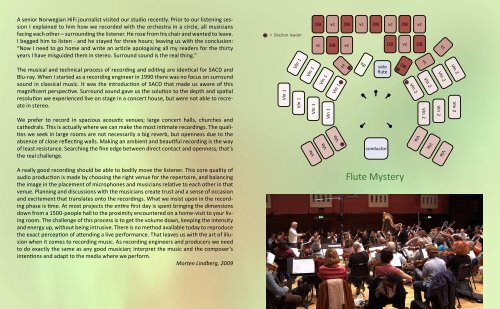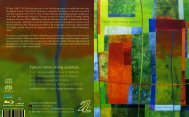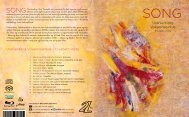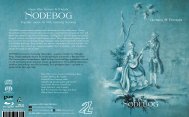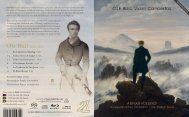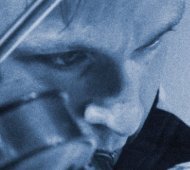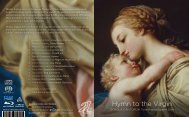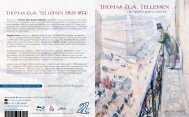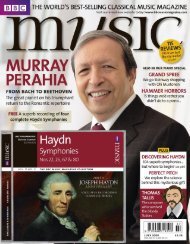FLUTE MYSTERY e
2L58SABD_eBook.pdf
2L58SABD_eBook.pdf
Create successful ePaper yourself
Turn your PDF publications into a flip-book with our unique Google optimized e-Paper software.
A senior Norwegian HiFi journalist visited our studio recently. Prior to our listening session<br />
I explained to him how we recorded with the orchestra in a circle, all musicians<br />
facing each other – surrounding the listener. He rose from his chair and wanted to leave.<br />
I begged him to listen - and he stayed for three hours; leaving us with the conclusion:<br />
“Now I need to go home and write an article apologising all my readers for the thirty<br />
years I have misguided them in stereo. Surround sound is the real thing.”<br />
The musical and technical process of recording and editing are identical for SACD and<br />
Blu-ray. When I started as a recording engineer in 1990 there was no focus on surround<br />
sound in classical music. It was the introduction of SACD that made us aware of this<br />
magnificent perspective. Surround sound gave us the solution to the depth and spatial<br />
resolution we experienced live on stage in a concert house, but were not able to recreate<br />
in stereo.<br />
We prefer to record in spacious acoustic venues; large concert halls, churches and<br />
cathedrals. This is actually where we can make the most intimate recordings. The qualities<br />
we seek in large rooms are not necessarily a big reverb, but openness due to the<br />
absence of close reflecting walls. Making an ambient and beautiful recording is the way<br />
of least resistance. Searching the fine edge between direct contact and openness; that’s<br />
the real challenge.<br />
= Section leader<br />
Vln 1<br />
Vln 1<br />
Vln 1<br />
Vln 1<br />
Vln 1<br />
Vln 1<br />
Vla<br />
Vla<br />
Vla<br />
DB vc DB<br />
vc DB vc<br />
Vln 1<br />
Vln 1<br />
vc<br />
vc<br />
hp<br />
DB<br />
solo<br />
flute<br />
conductor<br />
vc<br />
DB<br />
DB vc<br />
vc DB<br />
DB<br />
Vln 2<br />
Vln 2<br />
vc<br />
Vln 2<br />
Vla<br />
Vla<br />
vc<br />
Vln 2<br />
Vln 2<br />
Vla<br />
Vln 2<br />
Vln 2<br />
A really good recording should be able to bodily move the listener. This core quality of<br />
audio production is made by choosing the right venue for the repertoire, and balancing<br />
the image in the placement of microphones and musicians relative to each other in that<br />
venue. Planning and discussions with the musicians create trust and a sense of occasion<br />
and excitement that translates onto the recordings. What we insist upon in the recording<br />
phase is time. At most projects the entire first day is spent bringing the dimensions<br />
down from a 1500-people hall to the proximity encountered on a home-visit to your living<br />
room. The challenge of this process is to get the volume down, keeping the intensity<br />
and energy up, without being intrusive. There is no method available today to reproduce<br />
the exact perception of attending a live performance. That leaves us with the art of illusion<br />
when it comes to recording music. As recording engineers and producers we need<br />
to do exactly the same as any good musician; interpret the music and the composer’s<br />
intentions and adapt to the media where we perform.<br />
Morten Lindberg, 2009<br />
Flute Mystery


